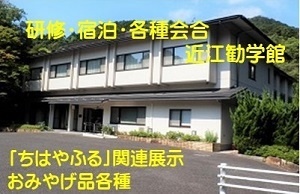Origin Outline
Oumi Jingu Shrine
Enshrined at 1-1 jingu-cho otsu-city, shiga pref.
Site of Capital Otsu "Oumi-Otsu-no-Miya"
Site of Capital Otsu "Oumi-Otsu-no-Miya"
deity
Emperor Tenji
The 38th Emperor, A.D.626-672 reign A.D.662-672
Origin
Oumi Jingu is enshrined in the site of Capital Otsu ”Otsukyo”.
Emperor Tenji was the great accomplisher of Taika Reformation and the great establisher in the ancient Japan. After His demise, also, people worshipped particularly as the Shinto God. In the Meiji Era, the believers began the movement to build the Emperor's Shrine all over Japan. At last, in Nov.7,1940 (15th year of the Showa Era), the Shrine was completed here, site of Capital Otsu, near the site of old His Palace "Oumi-Otsu-no-Miya". Soon afterwords, the shrine was raised to "Chokusai-sha". Annual Great Festival is celebrated in April 20, on the occasion of a visit by a specially dispatched imperial messenger.
Achievements of Emperor Tenji
Founder of Omi Statute (the first statute), the first census register, statesman of socialization to land and people, founder of the first national school, inventor of Water Clock "Rokoku", philosopher on time-concept, discoverer of coal and petroleum, and waka poet (cf, the first waka poem in Japanese Representative Anthology "Ogura-hyakunin-isshu")
Virtue of Deity
The word "Tenji" means deep,heavenly,limitless wisdom,and his other name "Amemikoto
Hirakasuwake"represents a token of respect for his achievements in carving out the future of
Japan according to the will of God.
Creator of happy time (Japanese Great Good "Chronos"), pioneer of the world, and patron of industry, culture, traffic safety, and so on.
We pray to our Shinto God Tenji for your fortune and your wonderful creative life.
The shrine
The main shrine,prayer hall,inner gate,and worship hall are beautifully arranged within the precinct of the shrine, which is located at the foot of Mt.Usa and overlooking a beautiful view of Lake Biwa.
The inner worship hall and outer worship hall, linked by a corridor represent the"Omi"style of construction.The shrine has become registered cultural property as one of the representative of the modern shrine architecture.
The inner worship hall and outer worship hall, linked by a corridor represent the"Omi"style of construction.The shrine has become registered cultural property as one of the representative of the modern shrine architecture.
Access
Location
1-1 Jingu-cho, Otsu City, Shiga pref.
1-1 Jingu-cho, Otsu City, Shiga pref.
Access
Take the JR Kosei Line to Otsukyo Station. 20-minute walk from there.
Take the JR Kosei Line to Otsukyo Station. 20-minute walk from there.
Take the Keihan lshiyama Sakamoto Line to Omi-Jingu-Mae Station.
10-minute walk fromthere.



